Lexus RZ 450e review: Comfortable, well-equipped, if pricey EV
The first bespoke EV from Lexus blends distinctive styling with a refined, up-market ride and generous amounts of standard kit. But it sits on a mediocre EV platform and its biggest selling point is still a work-in-progress
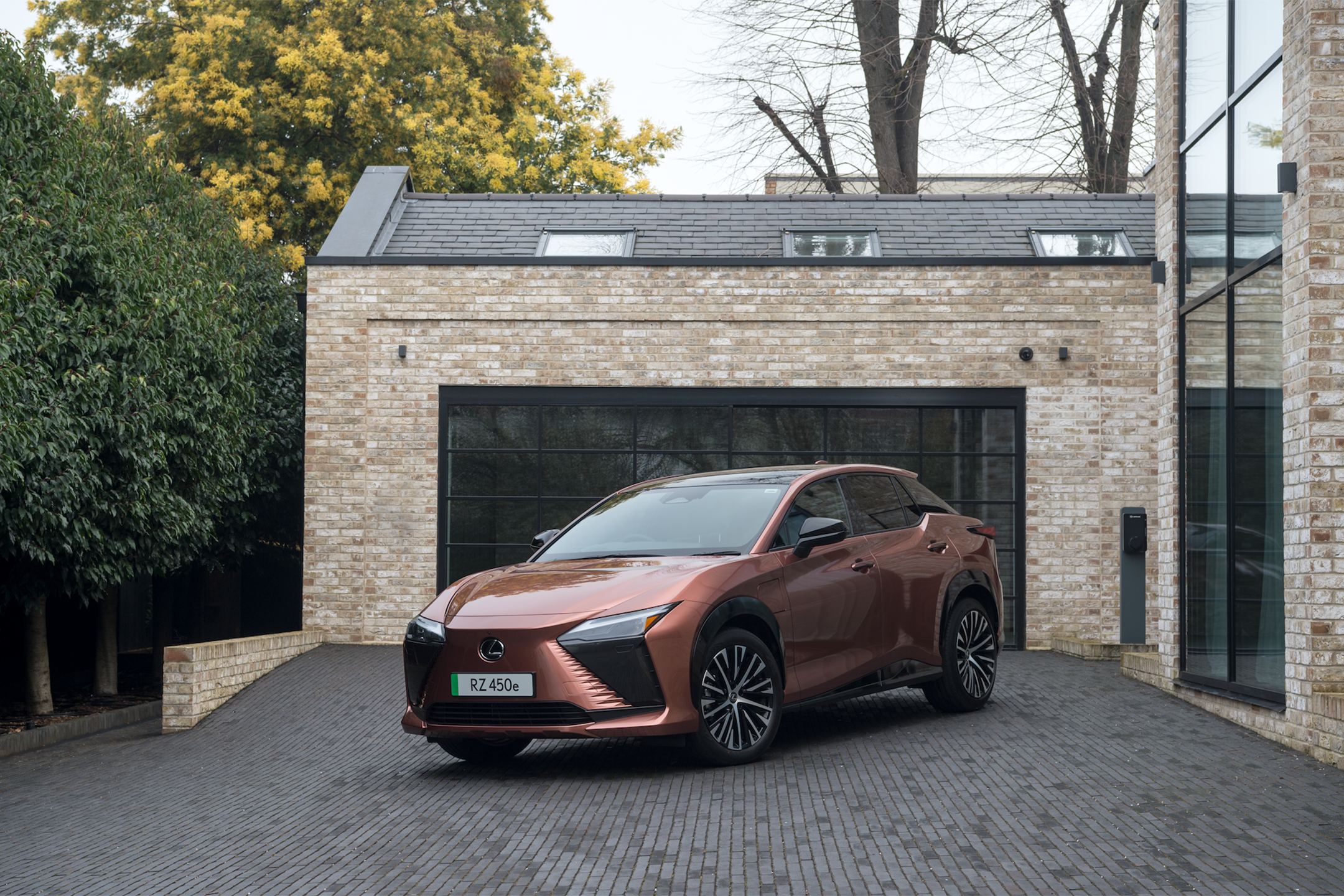
Bold styling and a refined, comfortable ride – plus plenty of performance, lots of included kit and, yes, knee heaters to keep the driver toasty – are all features that’ll be welcomed by the Lexus faithful.
Viewed in isolation, it’s not a bad first attempt at a ground-up EV from Lexus. But the left-field RZ is let down by mediocre charging speeds, a so-so infotainment system and a high price compared to its sibling, the £15,000 cheaper Toyota bZ4X. And, while the yoke steering looks clever, it won’t be available until 2025 and there’s a steep learning curve to climb for benefits that aren’t immediately obvious. Such cutting-edge tech would feel more at home in a ground-breaking sports car, not a plush mid-size SUV.
How we tested
I spent a day driving two versions of the Lexus RX through rural France, one with a conventional steering wheel and the other with Lexus’ work-in-progress ‘One Motion Grip’ yoke. The route included town driving, as well as sweeping country lanes and motorways.
Lexus RZ 450e: From £57,895, Lexus.co.uk
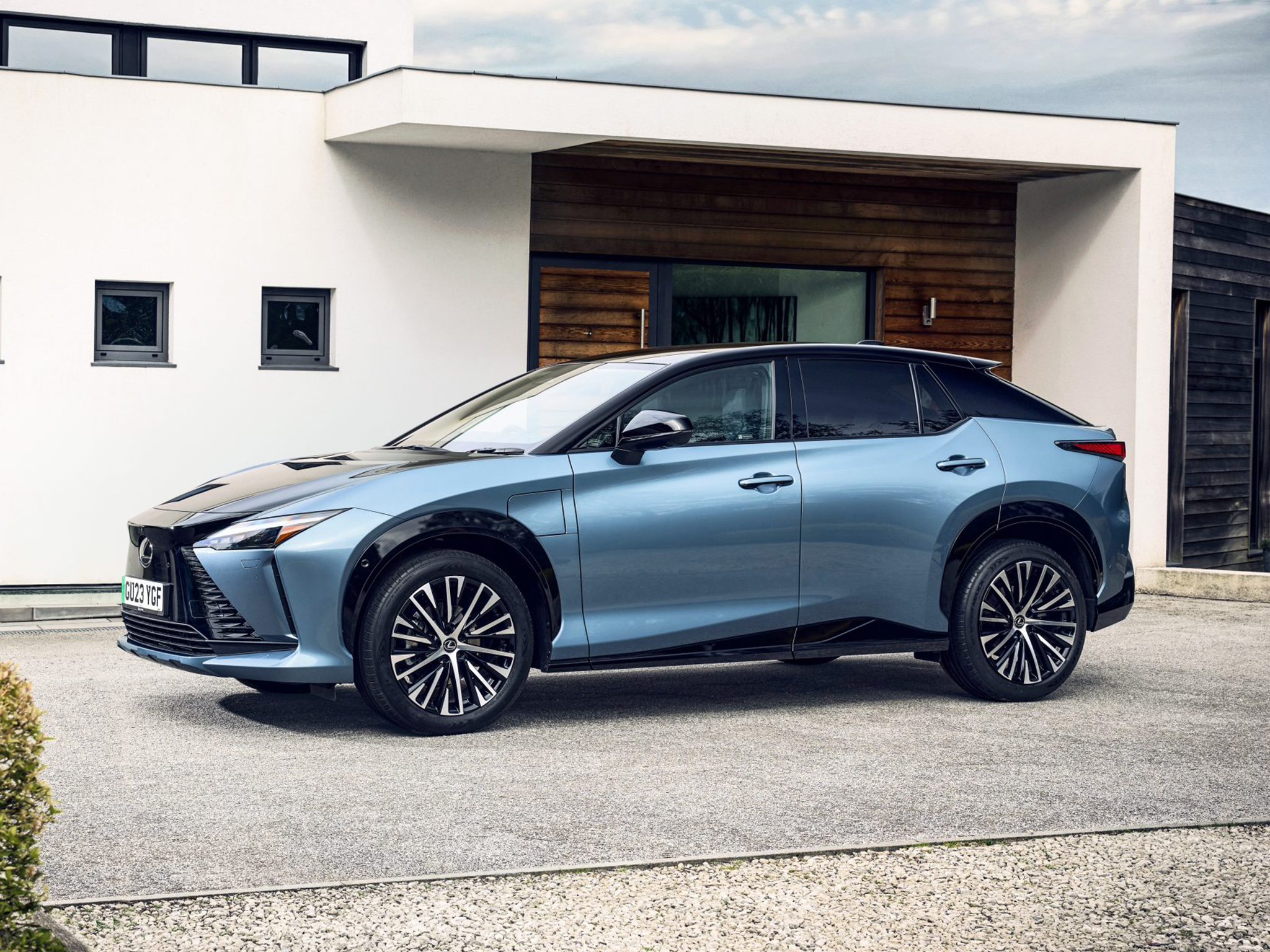
Independent rating: 6/10
- Pros: Distinctive styling, refined ride, lots of kit as standard
- Cons: Expensive, mediocre range and charge rate, work-in-progress yoke steering
- Price range: £57,895
- Battery size: 71.4 kWh
- Maximum claimed range: 271 miles
- Miles per kWh: 3.5
- Maximum charging rate: 150kW
Battery, range, charging, performance and drive
This is the first Lexus designed from the ground up as an EV, and does not share its platform with any internal-combustion alternatives. However, the RZ does share its underpinnings with the closely-related Toyota bZ4X, but with the Lexus intended as the more premium option.
It’s powered by a 71.4 kWh battery pack that Lexus claims can achieve a range of up to 271 miles and an efficiency of around 3.5 miles per kWh, although we saw an impressive 4.0 m/kWh on our test drive. Unlike the cheaper Toyota the Lexus RZ is offered only as a dual-motor car; this means it can perform as front-, rear- or all-wheel-drive depending on what’s needed. Total power output is 309 bhp (almost 50 percent more than the related Toyota) and it’ll hit 62 mph in 5.3 seconds.
It’ll charge pretty quickly too, with a maximum rate of 150 kW when connected to an equally powerful charger. Lexus says that’s enough to charge from empty to 80 percent in about 30 minutes. The regenerative braking strength is adjusted with paddles behind the wheel, which we think is the most convenient approach.
Interior, practicality and boot space
Anyone who has driven a recent Lexus will be familiar with the interior. It’s an attractive cabin with physical switchgear that’s easy to use, including rotating dials for temperature and volume, and proper buttons on the wheel. No frustrating, touch-sensitive haptics here. The height of the dashboard and infotainment screen helps you feel cocooned in the car, giving the impression of being lower than it really is, while the large, 14-inch display responds quickly and serves up wireless Apple CarPlay and Android Auto.
The rest of the interior is typically Lexus, in that it’s all a little quirky. It’s certainly distinctive, but by no means offensive. The dimmable panoramic glass roof is a highlight, along with what Lexus calls “radiant heaters” but you’ll refer to as knee warmers. Yes, they blow warm air at your knees from below the dashboard, and are actually rather pleasant.
From 2025 the RZ will be offered with “One Motion Grip”, which is Lexus-speak for a yoke instead of a steering wheel. We’ve tried it and, while it looks fantastically futuristic, the variable steering ratio – where the front wheels turn by a different amount depending on car speed and how quickly you steer – takes some learning with no obvious benefit. That said, we can’t wait to try the yoke after its commercial launch in 2025.
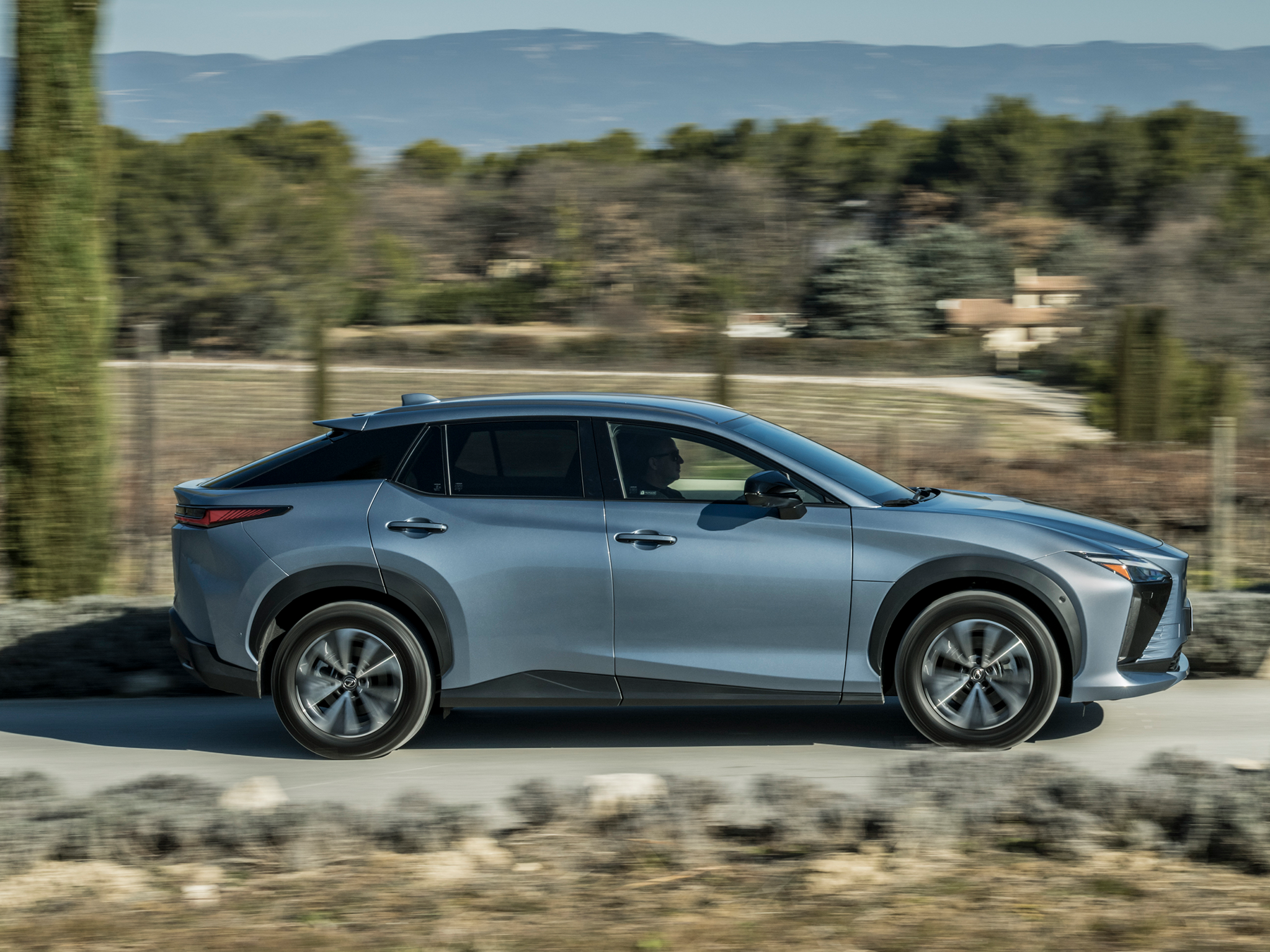
Technology, stereo and infotainment
That huge dashboard display handles the car’s infotainment system, as well as some elements of the climate control. Not dissimilar to a Jaguar I-Pace or previous-generation Range Rover, a pair of physical dials sit on top of the screen and are used to adjust temperature. This is a smart approach, since they can be controlled without taking your eyes off the road, while lesser-used functions like fan speed and seat heating are permanently shown on the lower portion of the touchscreen.
There are three USB-C ports below the display, plus a wireless phone charger and more sockets for rear passengers too, so you’ve no excuse for your devices running out of battery. Other optional tech includes a 360-degree camera and a whole bunch of safety systems. There’s the usual stuff – lane departure warnings, blind spot monitor, automatic emergency braking and parking assist – but also a system that stops you opening the door if a bicycle is approaching.
Lastly, the Lexus RZ is available with a 1,800-watt, 13-speaker Mark Levinson stereo, which we thought sounded great.
Prices and running costs
The Lexus RZ is priced from £57,895 and only one model, called the 450e, is currently available. There are then four trim levels on offer, with the most expensive called Takumi and priced from £65,595. Whichever way you cut it, the RZ is much more expensive than the closely-related Toyota bZ4X, which starts at £42,860. For the extra cash you get a well-equipped car that is refined, rides well and, if you must, can soon be had with yoke steering. But even then, there are better value EVs out there.
Running costs of EVs can be much lower than that of an equivalently sized petrol or diesel car, especially if you charge at home and try to avoid expensive motorway chargers. Maintenance is also simpler, thanks to them having far fewer moving parts.

Lexus RZ 450e Rivals
FAQs
How long does it take to charge?
The Lexus RZ has a maximum charge rate of 150 kW. Plug it into a charger rated for at least 150 kW and it should fill from almost empty to 80 percent in about 30 minutes. A full refill at home using a wallbox charger will take about 9.5 hours.
How much does it cost - is it worth it?
The Lexus badge has always carried a premium over its Toyota siblings, and that’s the same case here with the RZ. As a result, it is around £15,000 more expensive than the Toyota bZ4X on which it is based.
Does Lexus replace batteries for free?
The RZ’s battery and converter are covered by a warranty that lasts for eight years or 100,000 miles, whichever comes first. If the battery fails before then, or its maximum capacity falls below Lexus’ expectations, then owners may be entitled to a replacement.
The verdict: Lexus RZ 450e
Looking past the ‘One Motion Grip’ yoke – since it won’t be on sale until 2025 and was still a prototype during my test – the RZ is a refined, comfortable and well-equipped EV with distinctive styling inside and out. I just wish it had more range and quicker charging to justify the price.
Join our commenting forum
Join thought-provoking conversations, follow other Independent readers and see their replies
Comments
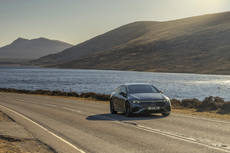



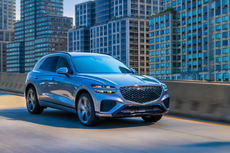
Bookmark popover
Removed from bookmarks